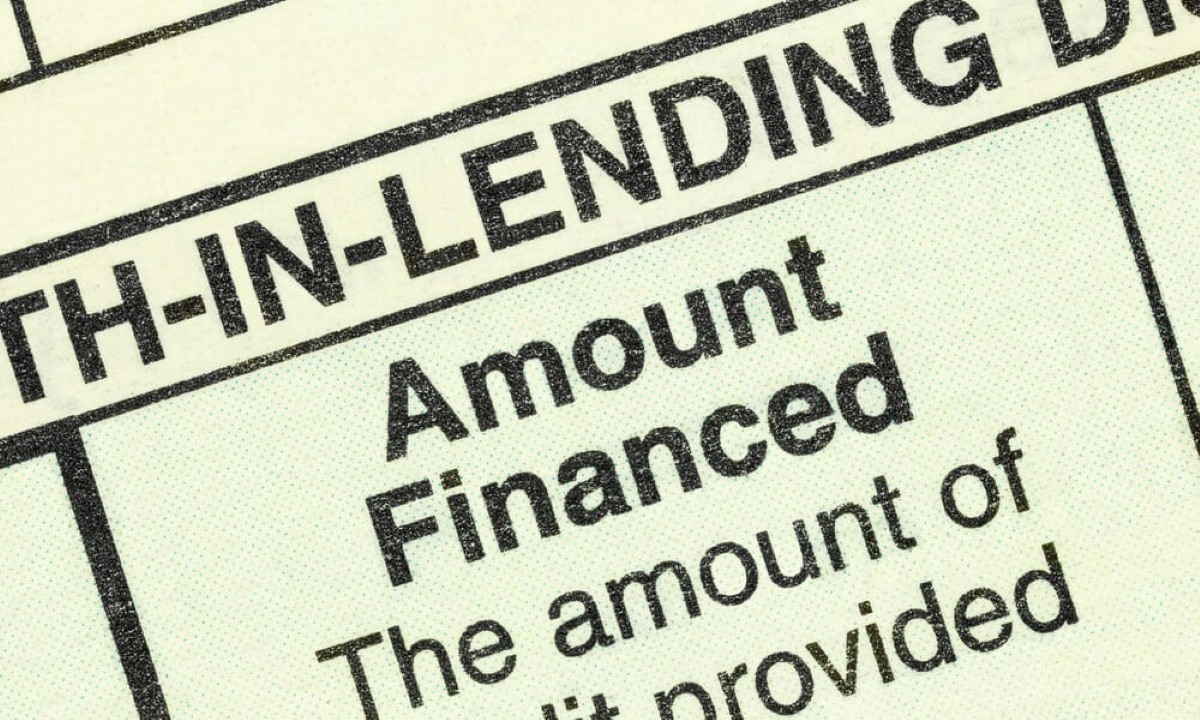

Finance
What Is The FSA Grace Period?
Published: February 19, 2024
Learn about the FSA grace period and how it can benefit your finances. Understand the advantages and rules of this time extension.
(Many of the links in this article redirect to a specific reviewed product. Your purchase of these products through affiliate links helps to generate commission for LiveWell, at no extra cost. Learn more)
Table of Contents
Understanding the FSA Grace Period
Flexible Spending Accounts (FSAs) offer a valuable way for individuals to set aside pre-tax dollars to cover eligible healthcare expenses. The FSA grace period is a provision that adds a layer of flexibility to this arrangement. It allows FSA participants to utilize any remaining funds from the previous plan year for eligible expenses during an extended period. This grace period typically spans two and a half months after the end of the plan year, providing a valuable opportunity to maximize FSA funds.
During the FSA grace period, participants can incur new expenses or submit claims for eligible costs incurred during this extended timeframe. This means that funds from the prior plan year can be used to cover expenses beyond the traditional December 31st deadline. Understanding the FSA grace period empowers individuals to make the most of their FSA benefits and avoid forfeiting unused funds.
It’s important to note that the FSA grace period is distinct from the FSA rollover provision. While the grace period allows for a temporary extension to use remaining funds, the rollover provision permits participants to carry over a portion of unused funds into the following plan year, subject to specific limits set by the plan. Both options offer valuable flexibility, but it’s essential to understand the nuances of each to make informed decisions regarding FSA participation.
Benefits of the FSA Grace Period
The FSA grace period presents several key benefits for participants. Firstly, it provides an extended window of opportunity to utilize remaining FSA funds from the prior plan year. This flexibility can be particularly advantageous for individuals who may have underestimated their eligible expenses or encountered unexpected healthcare costs towards the end of the plan year.
Moreover, the grace period enables participants to strategically plan and schedule healthcare expenses. By leveraging this additional time frame, individuals can coordinate elective procedures, purchase necessary medical supplies, or schedule appointments for services such as dental care or vision correction. This can be especially beneficial for those seeking to optimize their FSA funds and align expenses with their healthcare needs.
Additionally, the FSA grace period serves as a safeguard against forfeiting unused funds. Without this provision, participants risk losing any remaining FSA balances at the end of the plan year. The grace period mitigates this concern by offering an extended period to exhaust funds on eligible expenses, thereby minimizing the likelihood of forfeiture.
Furthermore, the ability to utilize the grace period can contribute to financial peace of mind. Knowing that there is an extended timeframe to allocate remaining FSA funds can alleviate stress and uncertainty, providing participants with added flexibility and control over their healthcare spending.
Overall, the benefits of the FSA grace period encompass enhanced flexibility, strategic planning opportunities, risk mitigation against fund forfeiture, and improved financial confidence for participants. Understanding and leveraging these advantages can empower individuals to make the most of their FSA benefits and optimize their healthcare spending.
Eligibility for the FSA Grace Period
Eligibility for the FSA grace period is contingent upon the specific provisions outlined in the employer-sponsored FSA plan. While the grace period is a valuable option for many FSA participants, it’s essential to understand the eligibility criteria to determine if this extension applies to a particular plan.
Typically, employers have the discretion to offer the FSA grace period as part of their FSA plan. It’s important for participants to review the summary plan description or consult with the benefits administrator to ascertain whether the grace period is included in their FSA arrangement. Employers may choose to incorporate the grace period, the rollover provision, or neither, depending on the plan design and applicable regulations.
Furthermore, eligibility for the FSA grace period may be subject to certain conditions. Participants may need to have funds remaining in their FSA at the end of the plan year to qualify for the grace period extension. Additionally, the FSA plan may impose limitations on the types of expenses that can be incurred during the grace period, so it’s crucial to familiarize oneself with any such restrictions.
It’s important to note that FSA participants cannot utilize both the grace period and the rollover provision in the same plan year. Employers typically offer either the grace period or the rollover, or in some cases, may not provide either option. Understanding the specific features of the FSA plan and the associated eligibility requirements is paramount for participants seeking to take advantage of the grace period.
In summary, eligibility for the FSA grace period is determined by the employer-sponsored FSA plan and is subject to the plan’s specific provisions and conditions. Participants should review the plan documentation and engage with the benefits administrator to ascertain the availability of the grace period and understand any associated eligibility criteria and limitations.
Limitations of the FSA Grace Period
While the FSA grace period offers valuable flexibility, it is essential to be aware of certain limitations associated with this provision. Understanding these constraints can help participants navigate their FSA effectively and make informed decisions regarding healthcare expenses.
One significant limitation of the FSA grace period is the restriction on the types of expenses that can be incurred during this extended timeframe. Participants must adhere to the eligible expense guidelines outlined by the FSA plan, and certain expenses may not be permissible during the grace period. It’s crucial to review the plan documentation and familiarize oneself with any restrictions to ensure compliance and avoid potential issues with claim submissions.
Additionally, the FSA grace period does not alter the contribution limits set for the subsequent plan year. Participants should be mindful of their FSA contribution elections for the new plan year, as the availability of the grace period does not impact the maximum contribution amount allowed. Careful consideration of anticipated healthcare expenses and budgeting for contributions is essential to optimize FSA benefits while adhering to contribution limits.
Another limitation to consider is the potential impact of the grace period on coordination with other healthcare accounts or benefits. Participants with Health Savings Accounts (HSAs) or Health Reimbursement Arrangements (HRAs) should evaluate the implications of the FSA grace period on these accounts, as overlapping utilization of funds or expenses may have specific implications and require careful coordination.
Furthermore, the grace period does not extend the deadline for submitting claims. Participants must adhere to the claims submission deadlines specified by the FSA plan, even when utilizing the grace period. Timely and accurate submission of claims remains essential to ensure seamless reimbursement for eligible expenses.
Understanding the limitations of the FSA grace period empowers participants to navigate their FSA effectively, make strategic decisions regarding healthcare expenses, and optimize the use of FSA funds within the parameters set by the plan.
Tips for Maximizing the FSA Grace Period
Effectively leveraging the FSA grace period can optimize the benefits of this valuable provision. By employing strategic approaches, participants can maximize the utility of remaining FSA funds and enhance their healthcare spending flexibility. Consider the following tips for making the most of the FSA grace period:
- Review Eligible Expenses: Take the time to familiarize yourself with the list of eligible expenses outlined by the FSA plan. Understanding the scope of permissible costs can help you plan and allocate remaining funds effectively during the grace period.
- Coordinate Healthcare Services: Consider scheduling elective medical procedures, vision care appointments, dental treatments, or other eligible services during the grace period. This can enable you to strategically utilize FSA funds for planned healthcare needs.
- Submit Pending Claims: If you have incurred eligible expenses towards the end of the plan year but have not yet submitted the corresponding claims, ensure timely submission to facilitate reimbursement during the grace period.
- Utilize Over-the-Counter Items: Take advantage of the opportunity to use FSA funds for over-the-counter medical supplies and medications during the grace period, maximizing the flexibility of eligible expenses.
- Plan for Future Expenses: Assess upcoming healthcare needs and anticipate potential expenses that can be covered by FSA funds during the grace period. Strategic planning can help you allocate remaining funds efficiently.
- Coordinate with Other Accounts: If you have multiple healthcare accounts, such as an HSA or HRA, ensure coordination to optimize the utilization of funds and avoid potential conflicts or duplicative expenses.
- Stay Informed: Keep abreast of the FSA plan guidelines, deadlines, and any updates related to the grace period to ensure compliance and maximize the benefits of this extension.
By implementing these tips, participants can effectively leverage the FSA grace period to optimize their healthcare spending, minimize the risk of forfeiting funds, and strategically allocate remaining FSA balances for eligible expenses.














